Optimal monitoring with unique fire alarm (fire detection and early warning)
Temperature Monitoring in Tunnels, Subways, and Parking Lots
Tunnels, subways, and parking lots are common facilities found in modern cities, serving specific functions and purposes. However, they face certain safety challenges during their daily operations, with one of the main concerns being the risk of fire. Due to the typically crowded and confined nature of these spaces, evacuation and rescue operations can be challenging in the event of a fire.

Tunnels serve as vital pathways connecting cities or regions, such as highway tunnels and railway tunnels. The unique environmental conditions within tunnels, along with limited ventilation, can lead to rapid fire spread and accumulation of smoke, increasing the complexity of evacuation and rescue efforts.

As an integral part of urban public transportation, metro systems carry a large number of passengers every day. Fires in subway stations and tunnels can result in people being trapped and difficulties in evacuation, posing serious threats to passenger safety and transportation operations.
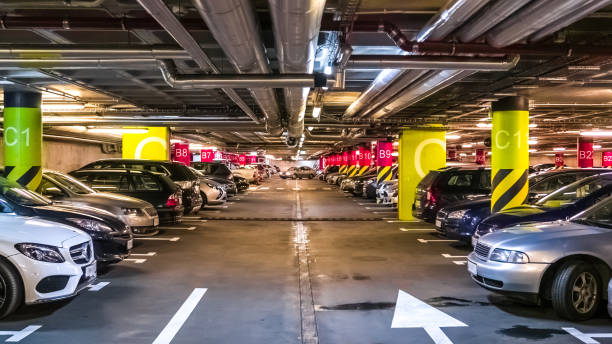
Parking lots are areas where vehicles are parked, commonly found in commercial areas, residential areas, and airports, among other places. Due to the presence of potential fire sources such as fuel and batteries in vehicles, the risk of fires in parking lots is relatively high. Additionally, parking lots often have limited ventilation, which can lead to the accumulation of smoke and rapid spread of fire.
To address the fire risks in these locations, distributed fiber optic temperature sensing technology offers an effective solution. By deploying fiber optic sensors, temperature changes can be monitored in real time, providing early fire detection and warning. This helps improve the detection and response speed of fires, reduce damages caused by fires, and enhance the safety and evacuation efficiency of individuals.
Solution:
Fiber Optic Deployment: Install distributed fiber optic sensors in key areas of tunnels, subway systems, parking lots, such as walls, ceilings, and pipes. The fiber optic sensors come into contact with the environment to continuously monitor temperature changes.
In the case of distributed fiber optic temperature sensing in tunnels, subway systems, and parking lots, the fiber optic deployment can be flexibly arranged based on specific conditions. Here are some common methods of deployment:
Wall Mounting: Install the fiber optic sensors along the walls of the tunnel, subway system, or parking lot. The fiber optic cables come into contact with the wall to sense temperature changes in the environment. Proper fixing devices are used to ensure a tight fit between the fiber optic cables and the wall.

Ceiling Mounting: Install the fiber optic sensors on the ceiling of the tunnel, subway system, or parking lot. The fiber optic cables come into contact with the surface of the ceiling to sense temperature changes in the air above. Appropriate brackets and fixing devices can be used to install the fiber optic sensors securely in place.
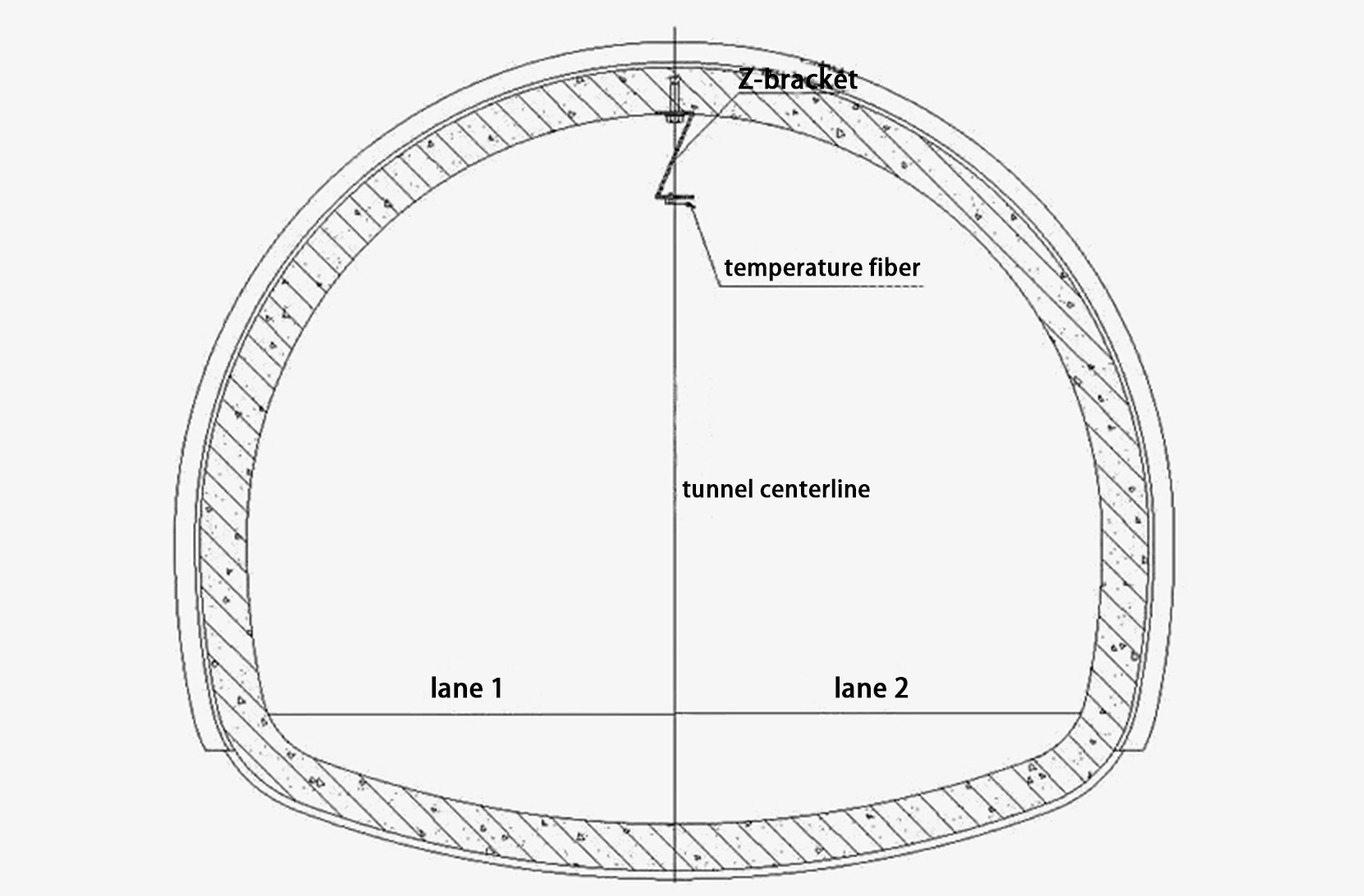
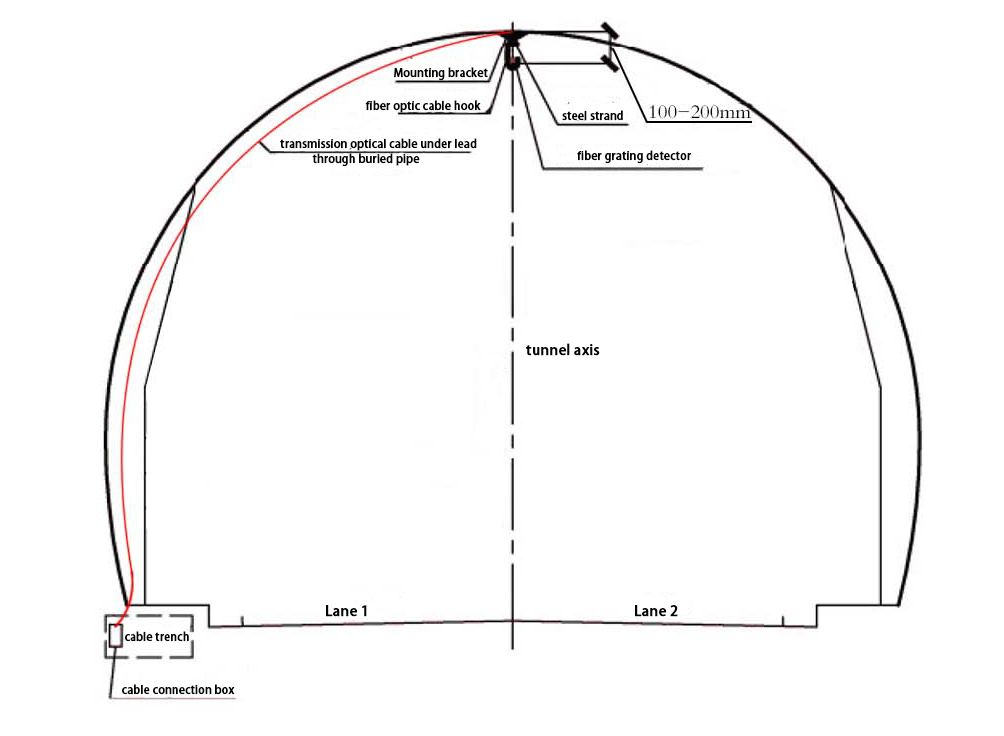
Ground Mounting: Install the fiber optic sensors on the ground of the tunnel, subway system, or parking lot. The fiber optic cables come into contact with the ground surface to sense temperature changes. Appropriate fixing devices and protective measures ensure the safety and stability of the fiber optic sensors.
Close Proximity to Target Objects: Based on specific requirements, place the fiber optic sensors in close proximity to the target objects that need temperature monitoring, such as cables, pipes, equipment, etc. By closely contacting the target objects, real-time temperature changes can be monitored.

When conducting fiber optic installation, the following factors need to be considered:
Selection of installation locations: Choose suitable locations for fiber optic installation based on the requirements, covering critical areas and target objects to be monitored.
Fiber optic fixation and protection: Ensure that the fiber optic sensors are in full contact with the installation surface, and take appropriate measures to fix and protect the fiber optics to prevent damage or interference.
Connection and data acquisition: Connect the fiber optic sensors to the monitoring system to enable real-time data acquisition and transmission for temperature monitoring and analysis.
By properly installing fiber optic sensors, real-time temperature monitoring can be achieved in tunnels, subways, and parking lots. Temperature anomalies can be detected promptly, allowing appropriate measures to be taken to ensure the safe operation and comfort of these areas.
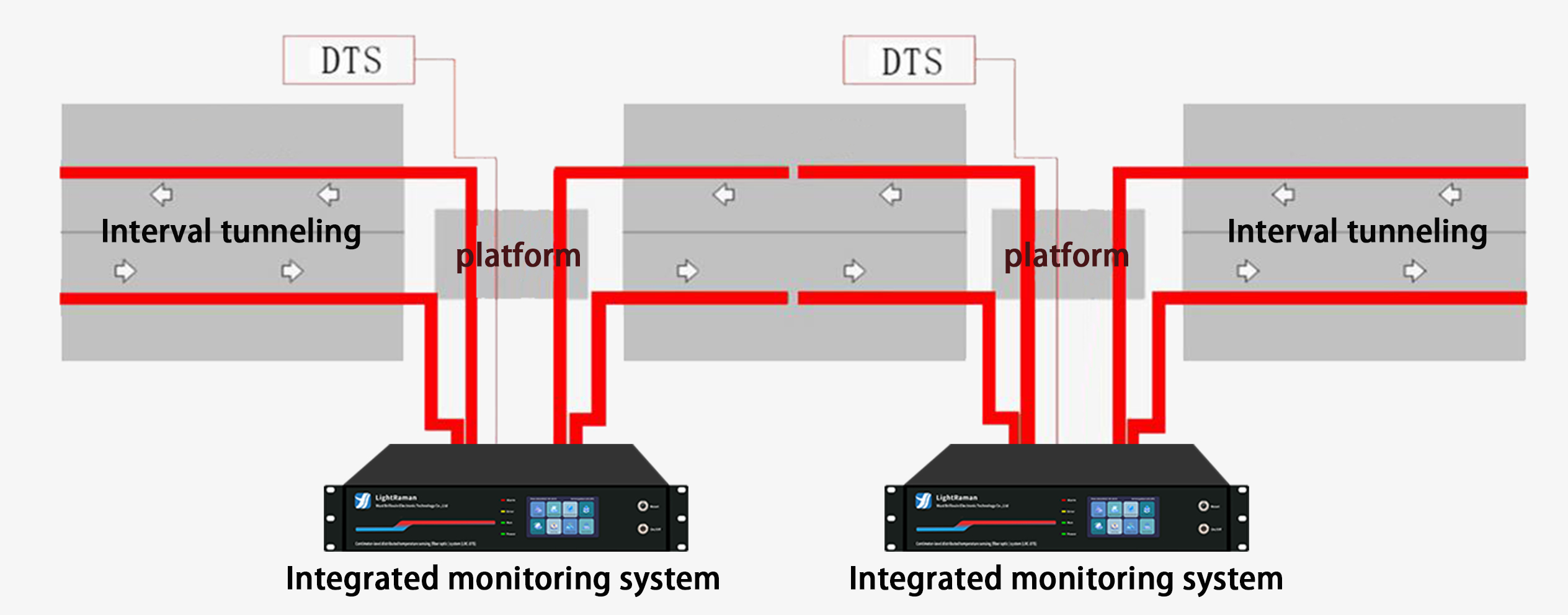
Real-time monitoring: Through distributed fiber optic temperature sensing technology, the temperature changes in the areas connected to the fiber optic sensors are monitored in real-time. The fiber optic sensors are distributed along the area, and the temperature distribution is reflected through the changes in the optical signals in the fiber.
Fire alarm and alert: Based on the monitored temperature data, predefined temperature thresholds are set and integrated with the fire alarm system. Once the temperature exceeds the threshold, the monitoring system triggers a fire alarm and alerts relevant personnel through sound, light signals, or remote notifications.
Fire localization and response: By analyzing the temperature data captured by the fiber optic sensors, the location of the fire can be determined, and timely fire suppression and evacuation measures can be taken. Additionally, the system can be integrated with emergency lighting and evacuation guidance systems to enhance the efficiency of fire response.
Remote monitoring and management: The distributed fiber optic temperature sensing system can be monitored and managed in real-time through a remote monitoring center. Monitoring personnel can remotely view temperature data, receive alarm notifications, and take appropriate actions promptly.
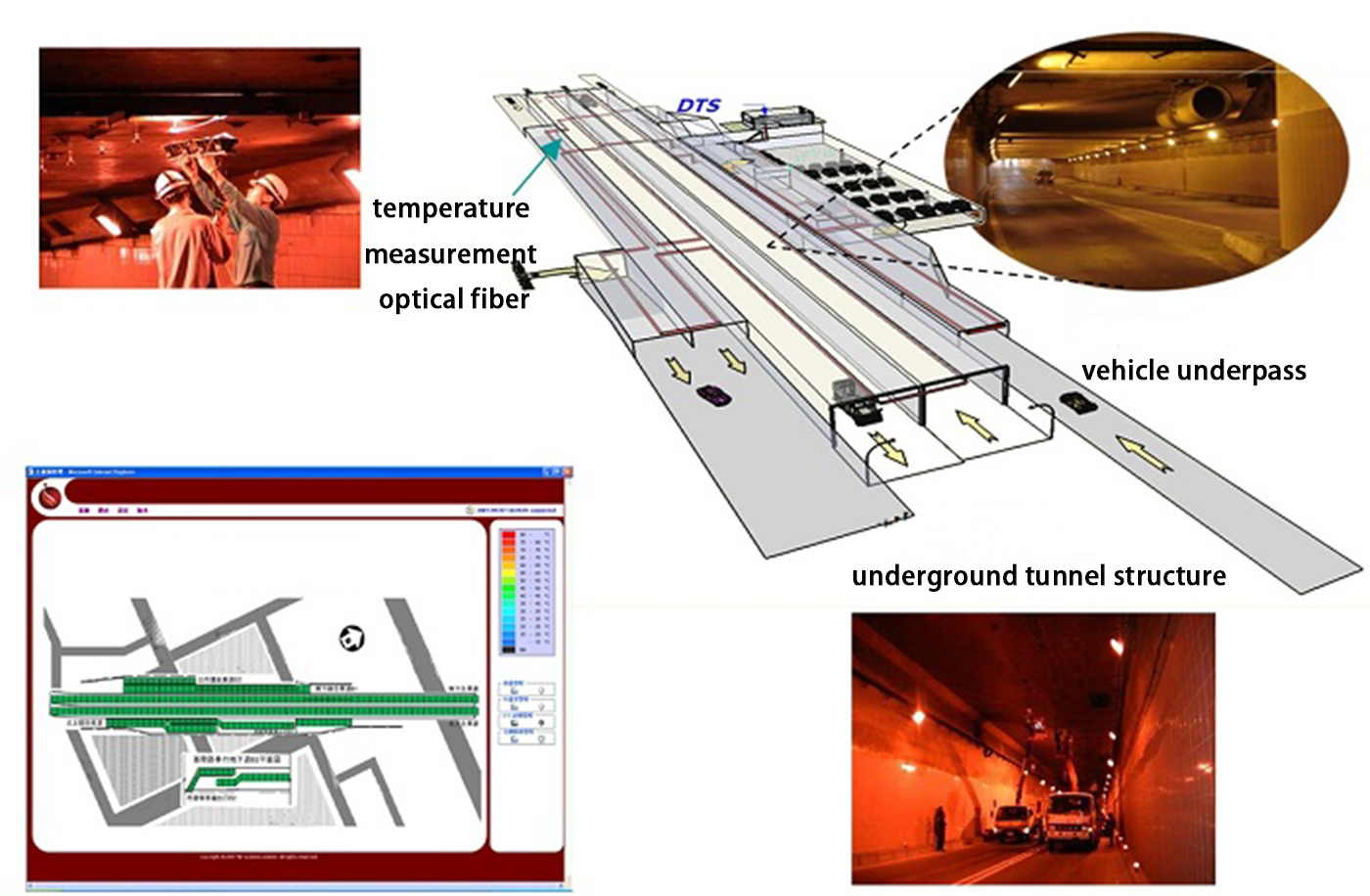
By applying distributed fiber optic temperature sensing technology, tunnels, subway systems, and parking lots can timely detect fire risks and provide effective warnings and protective measures to ensure the safety of individuals and the premises. This technology offers high sensitivity, real-time monitoring, and wide coverage, along with strong resistance to interference, allowing it to operate in harsh environments. It serves as a vital tool for modern fire monitoring and safety management.





